Whole Wheat Bread – Using Old Starter
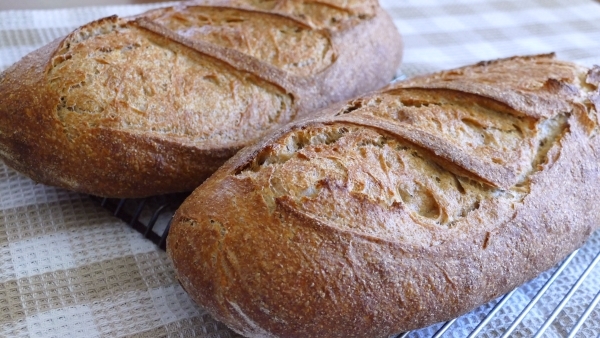
Double Hydration Whole Wheat Loaf – Using Old Sourdough Starter
Teresa L Greenway – All rights reserved worldwide May 2019

With this loaf, I used 39% whole wheat flour (freshly ground) and the rest was bread flour. I also used old starter that was not at it’s prime and needed to be fed. This happened because I wanted to make up some waffles but then it didn’t happen. I forgot about the starter I had mixed up for the batch of waffles and so when I remembered it, it was way overdue for it’s feeding.
Since I had 230 grams of starter, I didn’t want to toss it part of it and then feed it, so I used it in this formula. I fermented the dough overnight at room temperature 73F/22C and since the starter wasn’t very active to start with, it worked out great. If you use active starter, then you will have to follow a more traditional method of bulk fermenting for a few hours, shaping and baking or bulk fermenting, shaping, cold retard and then proof and bake the next day. So this method is actually for using old starter that you wish you had used up.
2050 grams dough at 74% hydration
In the evening ( I started at 7 pm) mix up your dough:
- 230 grams of old starter
- 650 grams of water (you will be adding more water later on)
- 450 grams whole wheat flour (I used freshly ground)
- 600 grams bread flour
- 20 grams salt
Mix the dough into a ragged mass by hand (optionally, you can mix in the whole wheat flour first and let it rest for 30 minutes before adding the bread flour and salt). The dough was at 73F/22C. It is a dry stiff dough, we will be adding more water later on.
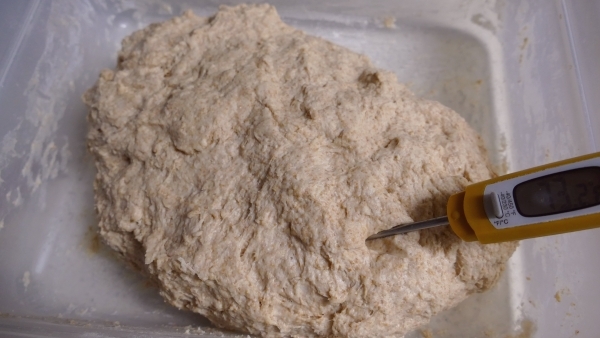
Allow the dough to rest for one hour. Then add:
- 100 grams of water
Double hydration (adding more water after the initial mix) allows the gluten to bond more strongly and the gluten still has stronger bonds even when you add more water to it later)Pour the water over the dough and do some gentle stretch and folds to help incorporate the water. The dough will be stiff and you do NOT have to incorporate all of the water. That will come with further folds. Dough after folding with the water (notice the extra water is not all incorporated). The initial dough was 66% hydration, after adding the water, it will be 74% hydration.
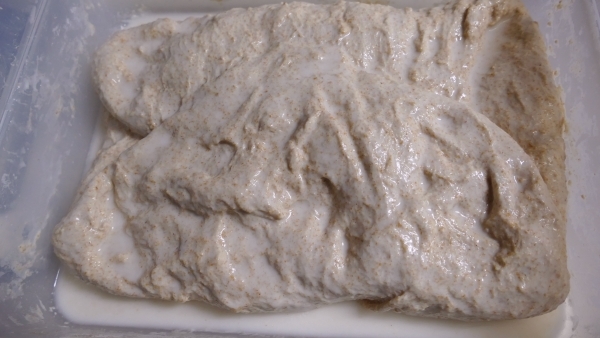
Allow the dough to bulk ferment (keep dough covered between folds) and do folds at 8:00 pm and then at 9:00 pm. After this time of folding in the water, your dough will look somewhat like this:
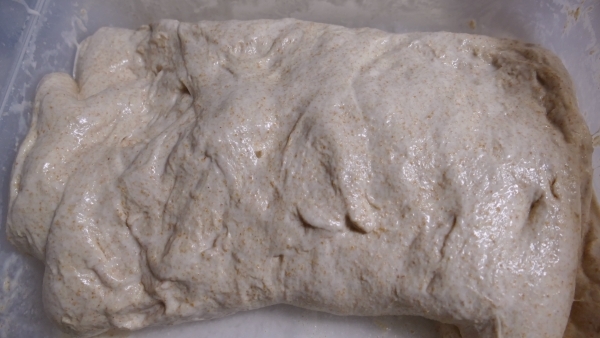
Now cover your dough and allow it to set overnight at room temperature (70-74F/21-23C).
Next morning 6-7 am) your dough will be fully bulk fermented and pull a nice windowpane (with added whole wheat flour it will be a bit weaker than with all bread flour):
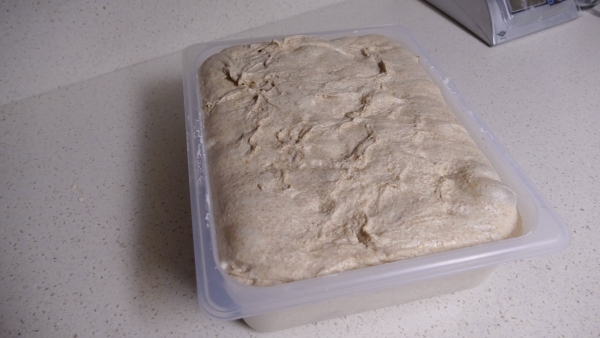
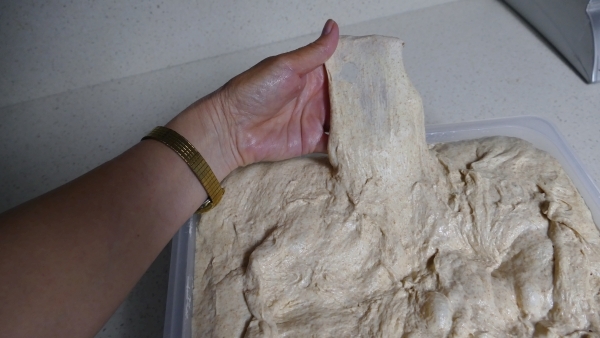
Divide your dough into two pieces, around 1 kilo each or make three smaller loaves.
Pre-shape and then allow the dough to rest for 20 minutes before final shaping and placing in banneton.

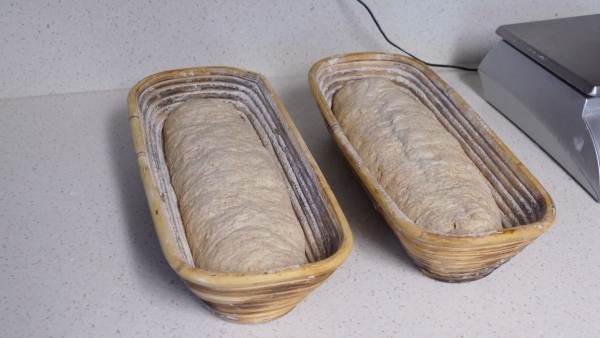
Proof your loaves carefully, they are warm and will proof fast, especially with the whole wheat in the dough. If you want to slow the dough down, then refrigerate as long as you need while your oven is pre-heating. To stagger your loaves, stagger the shaping or put one loaf in the fridge for about 40 minutes to slow it down a bit.
Pre-heat your oven to 480F/248C for at least one hour with the baking stone. When your dough is done proofing, score and place it onto the hot baking stone. You can optionally spritz your dough with water lightly before covering the dough with a lid (to hold in the steam).
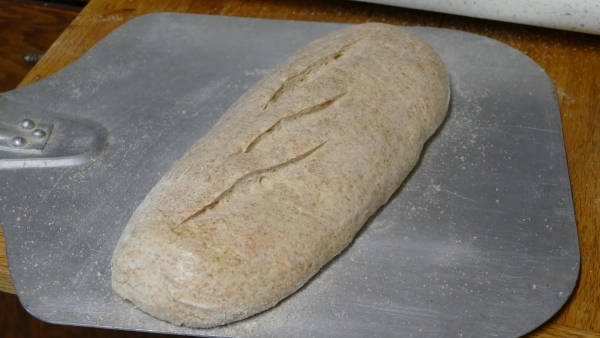
Bake for 15 minutes and then uncover your loaf and continue baking for an additional 25+ minutes or until the loaf is nicely browned and has an internal temperature of at least 205F/96C. Bake longer for a dark crust.
Remove your loaf and allow the oven to pre-heat again for 6-8 minutes and then bake your second loaf.
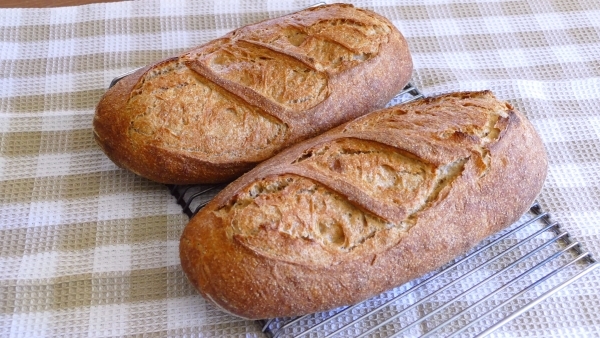
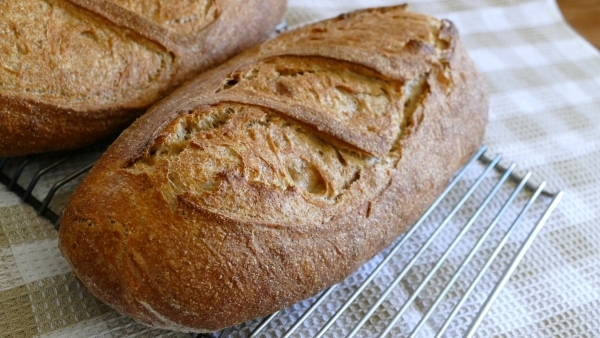
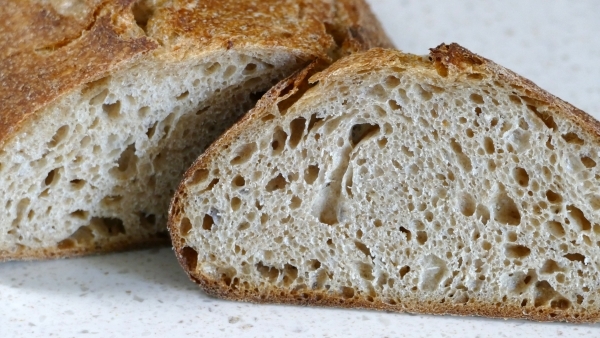
Cool your baked loaves completely on a cooling rack. Enjoy!
Download pdf here:

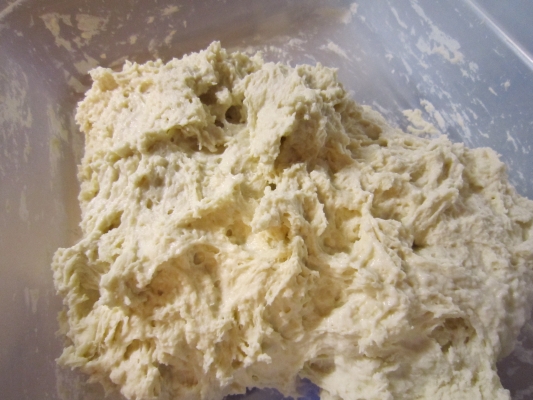
Responses